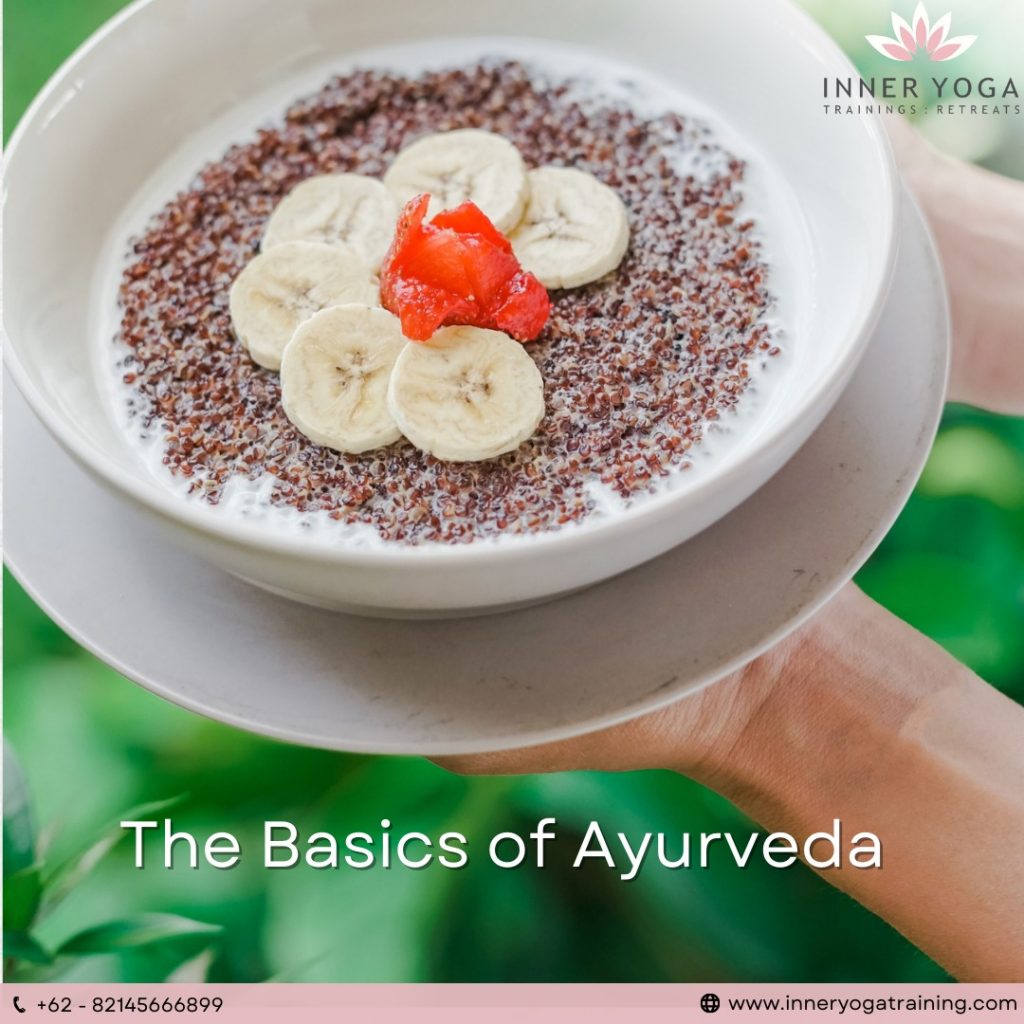Ayurveda is an ancient approach to health that originated in the Indian subcontinent around the 4th Century BCE. Known as “the science of life”, the word itself is a compilation of two Sanskrit words – “ayur”, meaning life, and “veda”, meaning knowledge or science. Ayurveda is a comprehensive system that provides a holistic approach to health and wellness. It refers to a framework of well-being that credits ailments and illness to a physical, emotional, or energetic imbalance and has been used in treating illness for over 5,000 years with the use of herbs, spices, and other natural materials. These are used to supplement changes in diet and lifestyle practices to improve digestion, boost immunity, and promote overall health.
According to Ayurveda, the Universe encompasses five elements – air, water, ether, earth, and fire. Each of these elements is believed to manifest as a combination in each of us known as “doshas”. Each dosha has its own attributes and plays a particular role within the body and mind. We all have a natural predominance of one or more dosha and this accounts for our physical constitution, known as Prakriti, and our personality. The three doshas are called Vata (air and ether which has been likened to the nervous system), Pitta (fire likened to enzymes), and Kapha (earth and water which is linked to mucus). Each is characterized by specific physical, emotional, and psychological characteristics. While every individual has characteristics of each, one or two are often more dominant than others. Imbalances in these doshas are believed to be the root cause of disease.
Keeping and maintaining balance in the doshas is what establishes well-being in an individual and a variety of methods are used to restore balance when required. Ayurveda places an emphasis on using natural remedies to heal the body, including diet changes, herbal remedies, massage therapy, therapeutic oils, yoga, and meditation. Eating in accordance with one’s natural body type is key in Ayurvedic treatment. We will cover the basics in this article, but a deeper dive into dosha-specific yoga and meditation practices is covered in Inner Yoga Training’s 200-hour yoga teacher training.
The key emotional and energetic characteristics of dominantly Pitta individuals are ambition, intellect, and confidence, but they can be prone to frustration and irritability. Physically, people who are Pitta dominant are usually of medium build with warm skin and a strong metabolism, but can be susceptible to digestive issues and may experience overheating. Pitta is associated with the elements of fire and water and those who are dominantly Pitta are encouraged to eat cooling refreshing foods such as avocado, leafy greens, and broccoli, and engage in calming practices such as yin yoga. They can generally process raw food much better than the other two doshas but should avoid anything that is spicy or sour such as onion, chili, and garlic as they will introduce too much heat into the body.
Kapha is characterized by and associated with the elements of earth and water. Physical characteristics of those who are dominantly Kapha include a strong build and soft skin. When in balance Kapha dominant individuals are strong, sturdy, and stable emotionally. Out of balance, they may find themselves sluggish and tired with an underactive metabolism – leading to a struggle with weight management. They may also suffer from excess phlegm. To maintain balance, Kapha individuals are encouraged to eat light-warming foods and partake in a dynamic exercise that increases vitality, such as vinyasa yoga. A yoga teacher training in Bali is a great option for Kapha-dominant individuals wanting to establish a greater sense of balance, due to the heat in Bali and ample dynamic yoga practices both supportive in establishing internal equilibrium. Vegetables that are particularly balancing for Kapha are pungent, bitter, and astringent. As most vegetables include these qualities, they are important to any Kapha balancing diet.
Vata is associated with the elements of air and ether. Individuals that are predominantly Vata in nature are typically thin with light and dry skin. Vata-dominant people are often quick-witted and creative but can be prone to anxiety and restlessness. They can struggle with decision-making and may appear to be unreliable. When Vata is out of balance people may experience joint pain and issues with circulation and will often be susceptible to feeling cold. For balance, it is suggested Vata individuals eat grounding, warm foods and partake in grounding, stabilizing practices, like meditation. A raw food diet is not recommended for Vata people as it introduces excess cold into the body. Cooked root vegetables are good because they are grown underground and are therefore ground and stabilizing.
Yoga plays a key role in finding balance with Ayurveda is a key part of Ayurveda and specific practices can help regulate the body and mind and establish a greater sense of balance in the doshas. Yoga practices and how they specifically relate to Ayurveda are elaborated on in Inner Yoga Training’s 200 hour yoga teacher training in Bali. During the yoga teacher training course, you will learn more in-depth about the philosophy behind Ayurveda and discover specific foods to avoid or add to your diet depending on your dosha. You will be given a dosha quiz to find out what your predominant dosha is so you can learn to live more in balance through your diet and activity.

